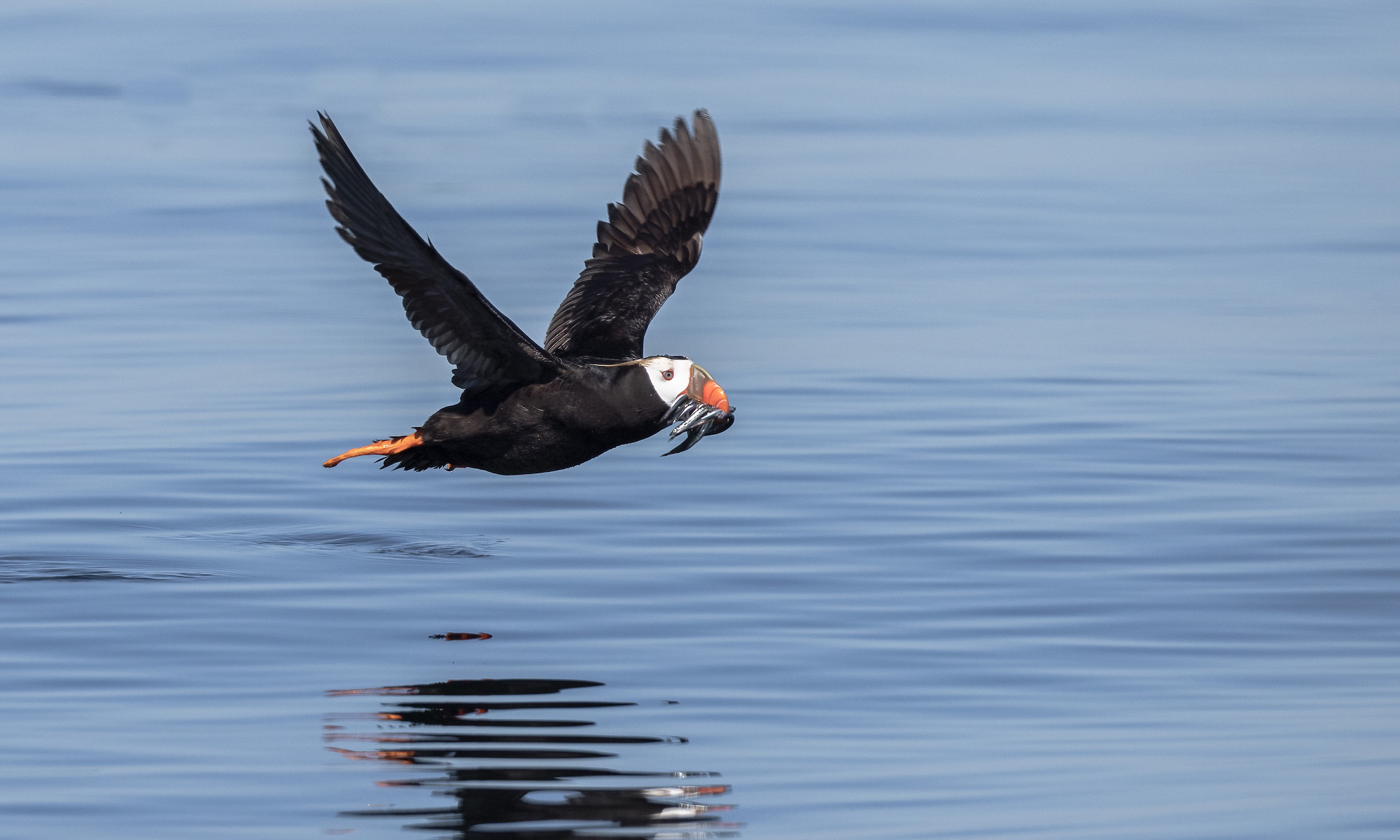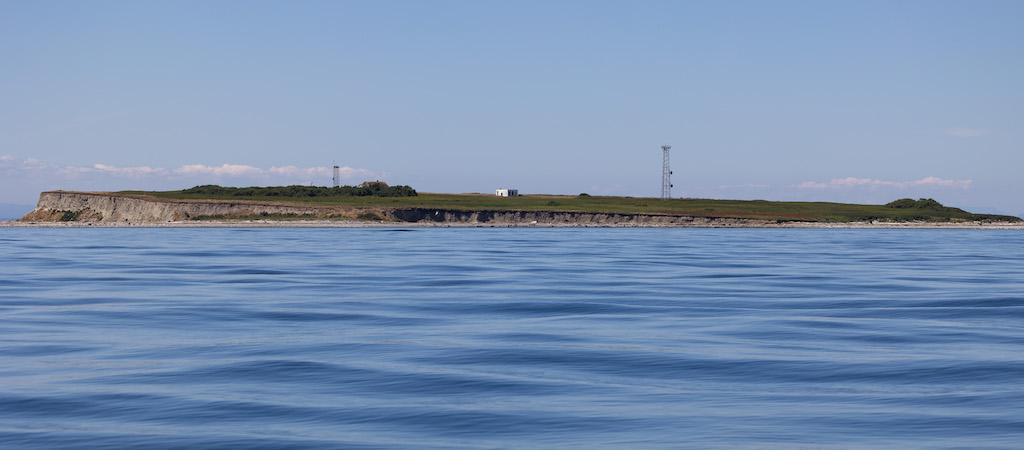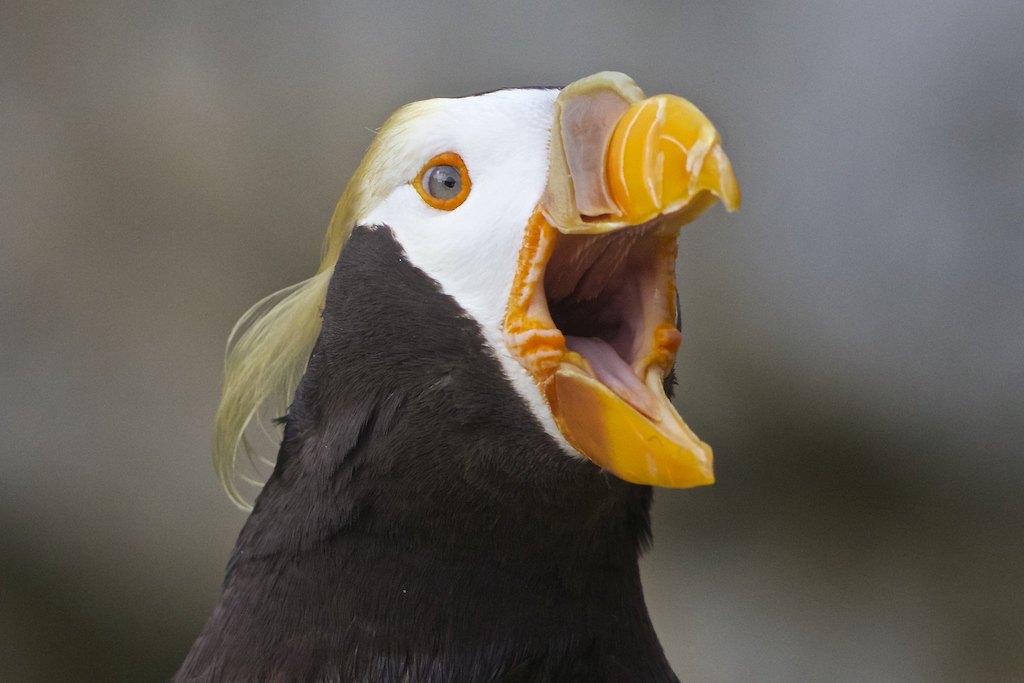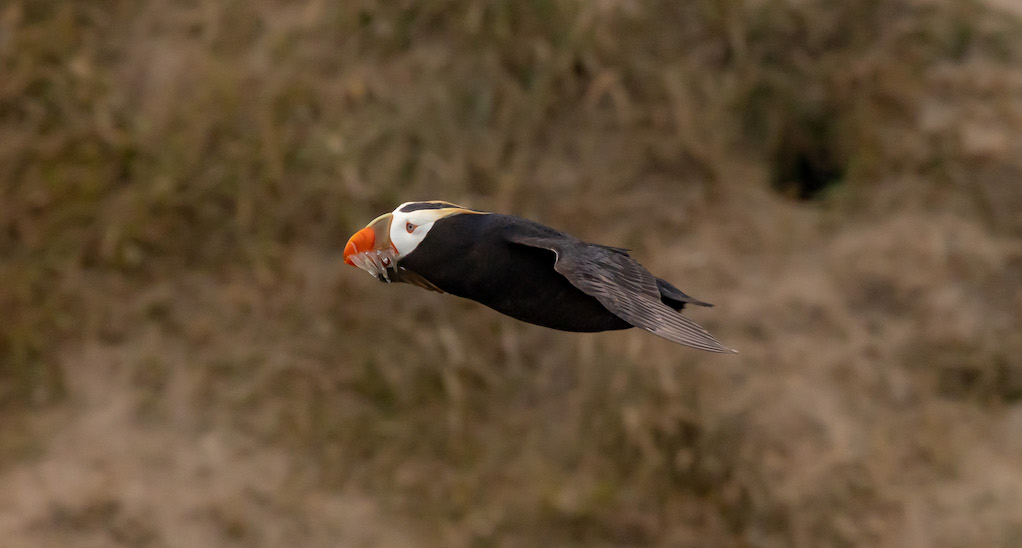Scott Pearson and Peter Hodum are naturally early risers, so when I haul myself from my sleeping bag around 5:45 a.m., I can hear them boiling water already over the camp stove. I can have no complaints. To see the tufted puffins of Smith Island, we have to be up before sunrise.
Pearson, Hodum, and I have spent the night on Smith’s neighbor, Protection Island, a national wildlife refuge just off the northern coast of the Olympic Peninsula. Once the coffee is ready — Hodum takes tea — we head down to the island’s small marina, where Pearson’s research boat, the R/V Puffin, is tied up. Pearson, a senior researcher with the Washington Department of Fish and Wildlife, starts the twin engines and we putter out into the Strait of Juan de Fuca.
Tufted puffins have become an increasingly rare sight in these parts, not just in Puget Sound and the Salish Sea, but around the Pacific Northwest as a whole.
Once in the strait we turn north. The day is promising clear skies and the water is calm and smooth; the Puffin all but flies over it. On the horizon are the larger profiles of the San Juans; but there is the small, squat shape of another piece of land in front of them. About fourteen miles from Protection, Smith Island sits in the middle of the strait’s eastern portion near Admiralty Inlet, and four miles from Whidbey Island. It is officially part of the San Juan Islands National Wildlife Refuge, but in its relative isolation seems like its own little world. It is small, perhaps 40 feet tall at most and a few acres in area, sloping down to a spit that joins it to Minor Island nearby. When the tide is low enough the spit sits mostly exposed. Taken together, then, Smith Island and Minor Island can sort of resemble a dinoflagellate, with Smith as the bulbous body and Minor as the spindly tail.





